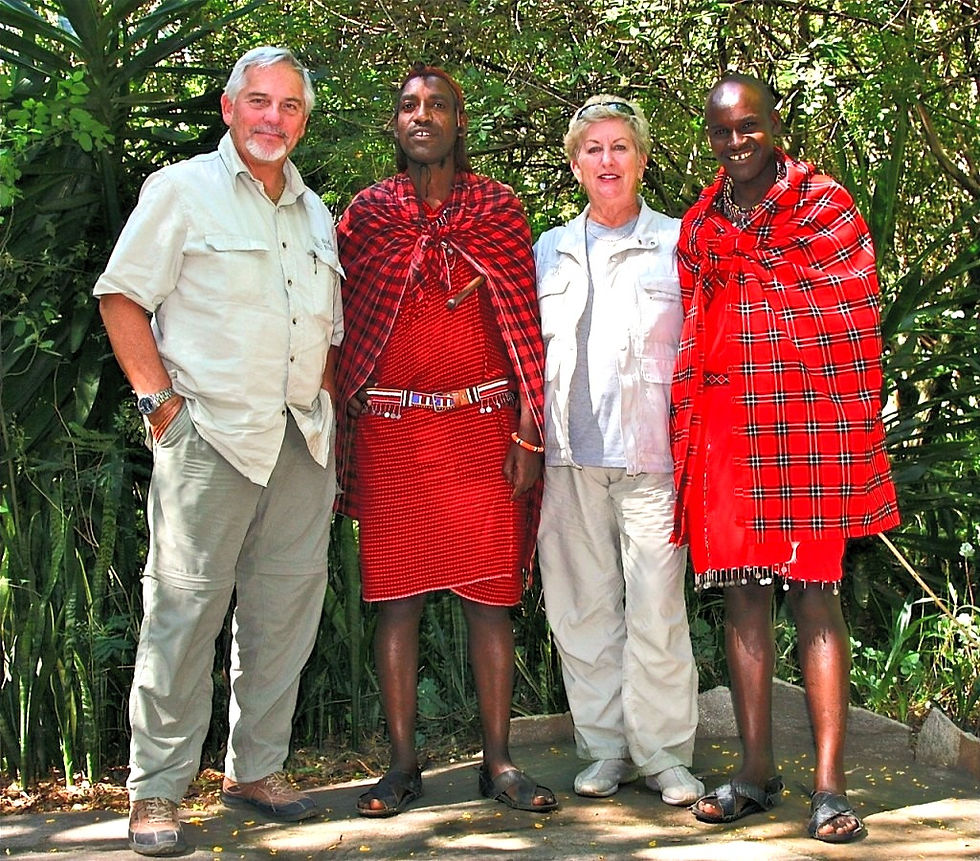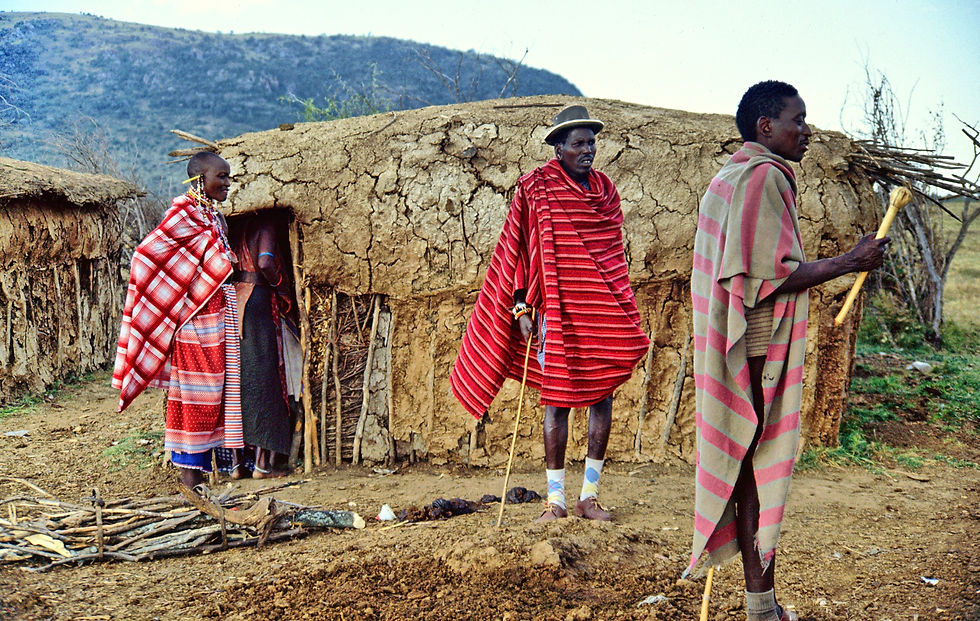When We Met The Maasai
- Paula Hammack

- Aug 8, 2020
- 3 min read
Today I would like to talk a little about the first time Sterling and I met the Maasai people and became aware of them. In the 1970s, the first time we visited Kenya I had wanted to see the lodge where the Queen was staying when she became queen on her father's death so our goal was to see Sagana Lodge and then continue on a safari. We did that and were out in the bush when we were asked if we would like to see a maasai village. Unlike today when there are commercial maasai villages, the one we saw was totally authentic. That’s because in the 70’s and 80’s and some of the 90’s the maasai were nomadic. Because they lived solely off their cows (drinking the blood and milk was the main meal) they needed pasture land and lots of grass. And because when they boiled water to drink they had to make a wooden fire as that was the only means available to them.
Th

ey do not live “inside”, even today – most of their life is outside of their homes and while today there are a lot of partially westernized maasai living in more sophisticated houses, the farther a person goes away from a large town the more primitive the life and housing is. What we refer to as a “house” is not what the maasai people live in –they live in a shelter to keep them warm at night and to take refuge in from rain and poor weather. Therefore when the pasture land was eaten up, and when it was a longer and longer walk to cut down trees for a fire, the tribe would move on to another location, rebuild huts and establish a life in the new location.

The village we visited in the 70’s had a young girl aged 11 called Anna and she was the one the village elders had chosen to have educated so she could speak english and talk to tourists and negotiate prices for trinkets etc. She was a delightful and charming young woman and the next year when we went back we learned that she had been sold off to another community at age 12, and would spend her days in the hut learning about the family she would eventually marry into. We were able to negotiate through Anna to buy trinkets and we wanted to do that to give them some income – at one point I lost my husband and eventually found him in the Chiefs hut negotiating to buy a wooden statue about 8 inches high with nails for eyes and a zipper for a decoration around its neck. The Chief wanted $30 for this when we were buying everything else for a few cents. We eventually learned that this was the village fertility God and he would only sell it for such a great amount. Sterling bought it and it sits on a table in my bedroom to this day – a prized possession.

We learned also that at a certain age young Maasai men would be sent out in the savannah for about a year to prove their masculinity and they would have to kill a lion with a spear to do so. I have a delightful picture of four of them out in the bush on this endeavor. We came to enjoy learning about the Maasai and always wanted to interact with them in our many visits to Kenya.
Today I constantly wonder how all my maasai friends and family would have managed had they lived 40-50 years ago. I have been able to share what I know with today's Maasai, and enrich their knowledge with some of my experiences from the early years I was in Kenya. The maasai people speak a language call MAA which I am trying to learn but find it quite difficult compared to the latin languages I learned at school in England. The national languages of Kenya are both Swahili and English so all Maasai people who are educated will speak 3 languages, Maa, Swahili and English.
The Maasai life changed exponentially when schooling was made mandatory. They had to stay in one location, they had to find money for each child to go to school, they had to find money to buy uniforms and books and pens. As most of the parents of the first students to have to go to school didn’t work, life became more and more difficult and to this day it is still a challenge for them to send multiple children to school. Our Foundation pays for about 100 children to attend school.





Comments